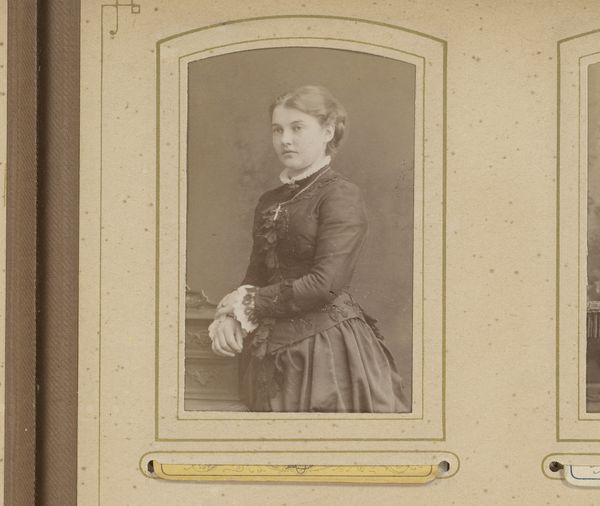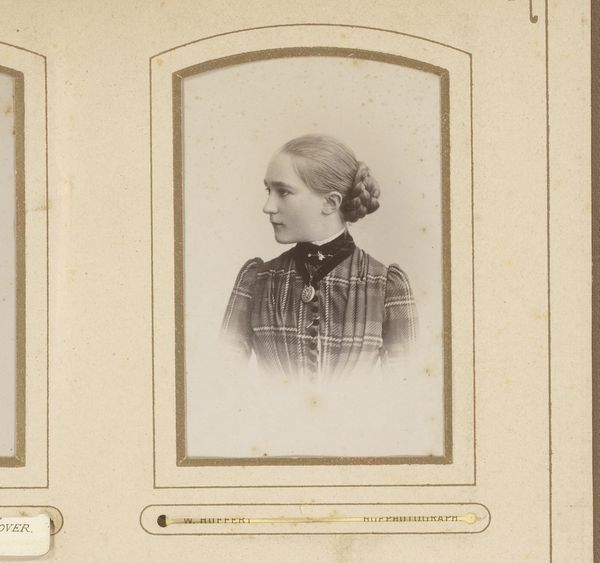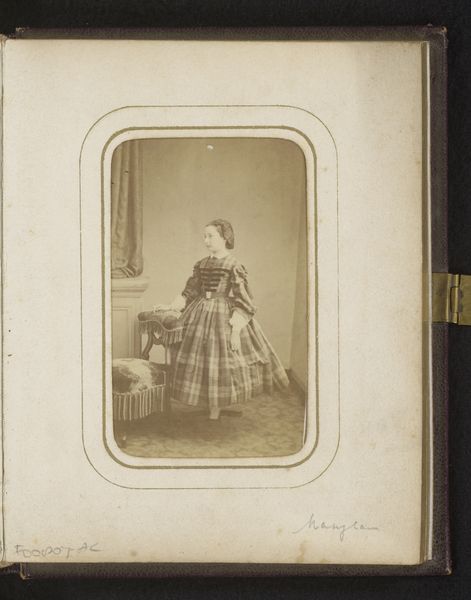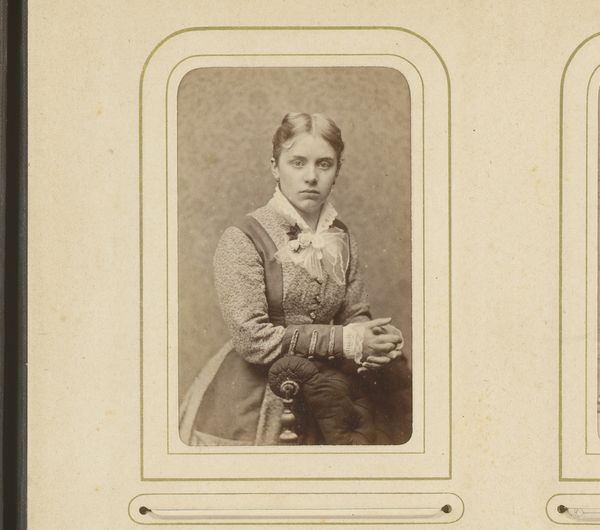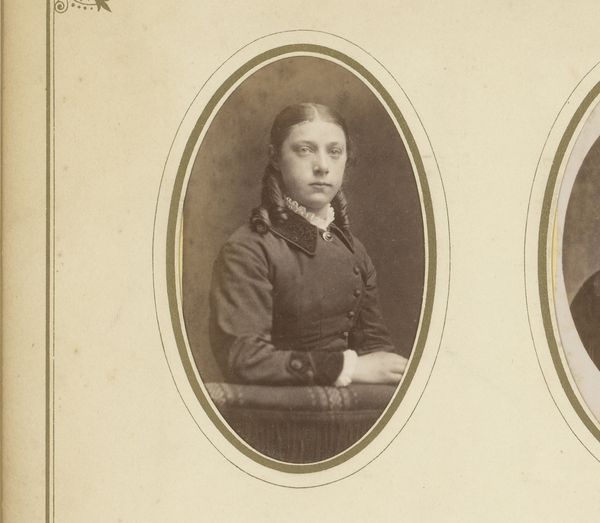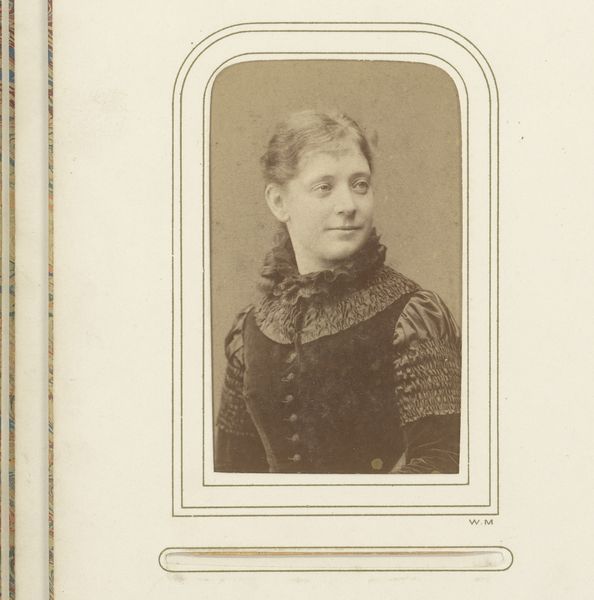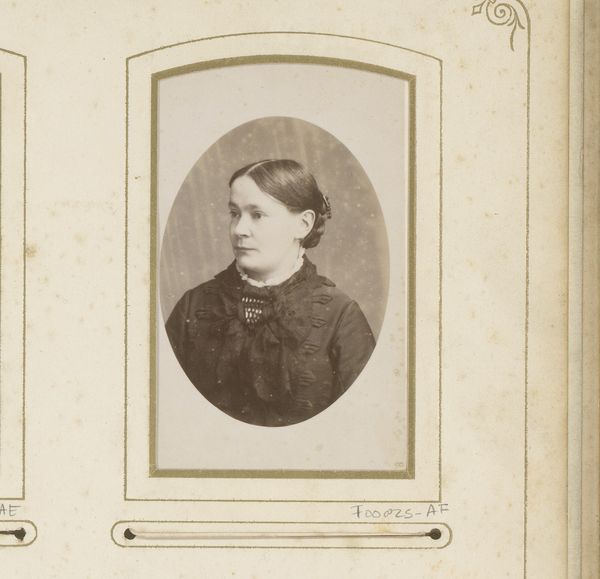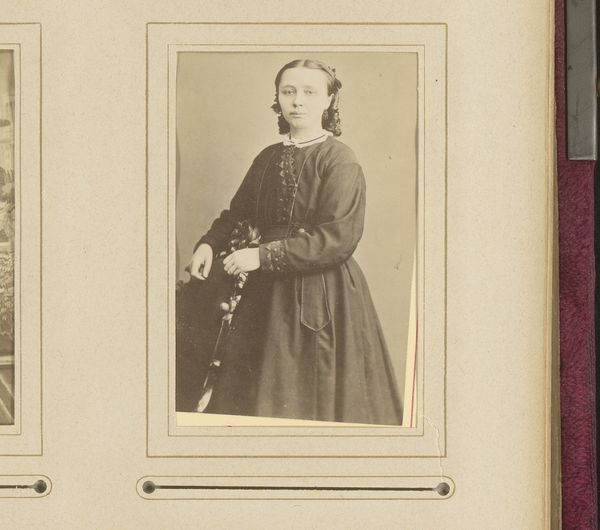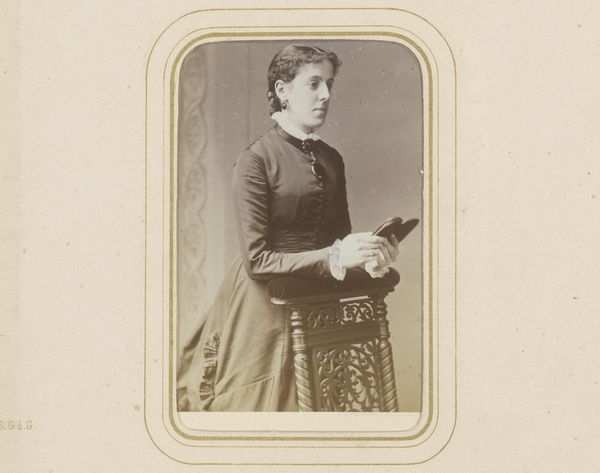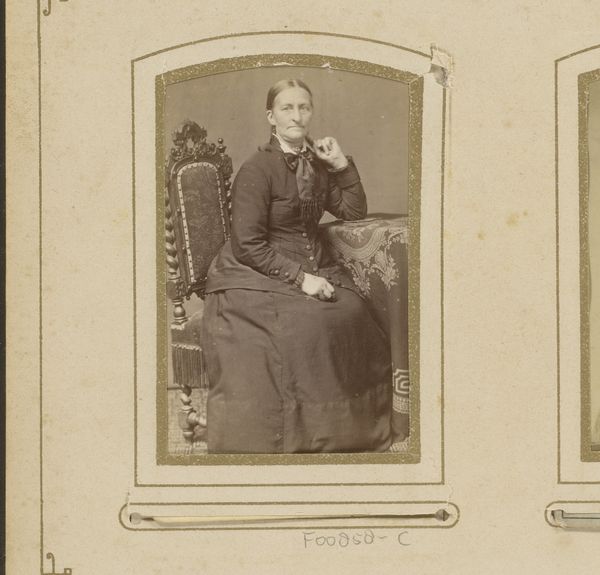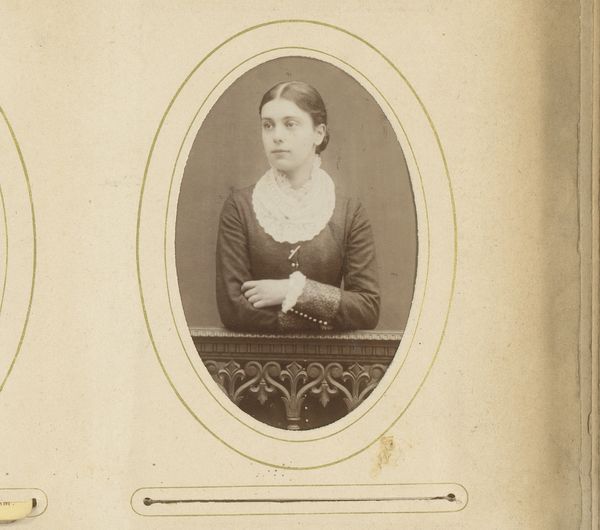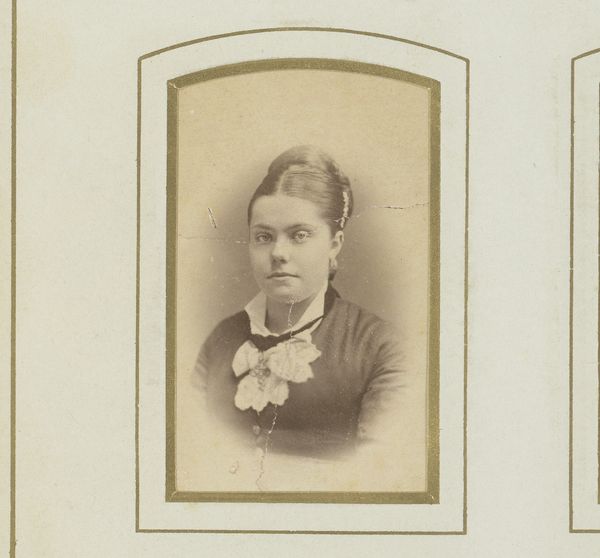
photography
#
photography
#
genre-painting
#
realism
Dimensions: height 82 mm, width 50 mm
Copyright: Rijks Museum: Open Domain
Curator: This photographic portrait, dating roughly from 1882 to 1900, captures a young woman seated at a table. Its attributed artist is Spurr, working firmly in the realism style. Editor: Ah, what a haunting presence! She’s bathed in this sepia tone that evokes a tangible sense of stillness—like a ghost momentarily captured in a forgotten space. Curator: Indeed. The artist meticulously uses photographic techniques to articulate both the external appearance and psychological dimension of the subject. Note how the lace collar provides contrast, almost a semiotic barrier to her emotional state. Editor: It's an intense standoff, right? She's in deep shadow and those sad eyes reveal an almost aggressive resistance to the observer. It feels profoundly personal, like she might shatter if you get too close. Curator: One could analyse that within a late 19th century sociological frame where women occupied defined spaces of both exposure and hidden interiority. What stands out structurally is the rigid pose and how it contrasts with that rather frilly bucket. Editor: She clings to that bucket as if its a life raft in an unforgiving ocean! Maybe its full of tears—the hidden grief of a tightly corseted soul. Honestly, the very materials—the processed paper, the chemicals—reek of a time lost but indelibly preserved. Curator: True, the photographic process here operates as both recorder and interpreter. There's an almost clinical quality combined with that sense of suppressed, and dare I say, performed melancholia. Editor: Perhaps her stillness speaks loudest. No matter how deeply you look, or analyze, that quiet resistance will never surrender its secret. She will simply continue looking back at us… forever fixed, like an unblinking memory. Curator: I find myself equally intrigued by the stark geometric framing, the image placed meticulously on its cardboard, echoing its rigidity. This piece prompts a cascade of potential structural interpretations regarding societal roles of that era. Editor: Maybe the greatest role art serves, and what Spurr truly gives us, is reminding ourselves that beneath the stiff surfaces, the silent gazes, reside boundless interior landscapes. A window—no matter how clouded—to something human.
Comments
No comments
Be the first to comment and join the conversation on the ultimate creative platform.
